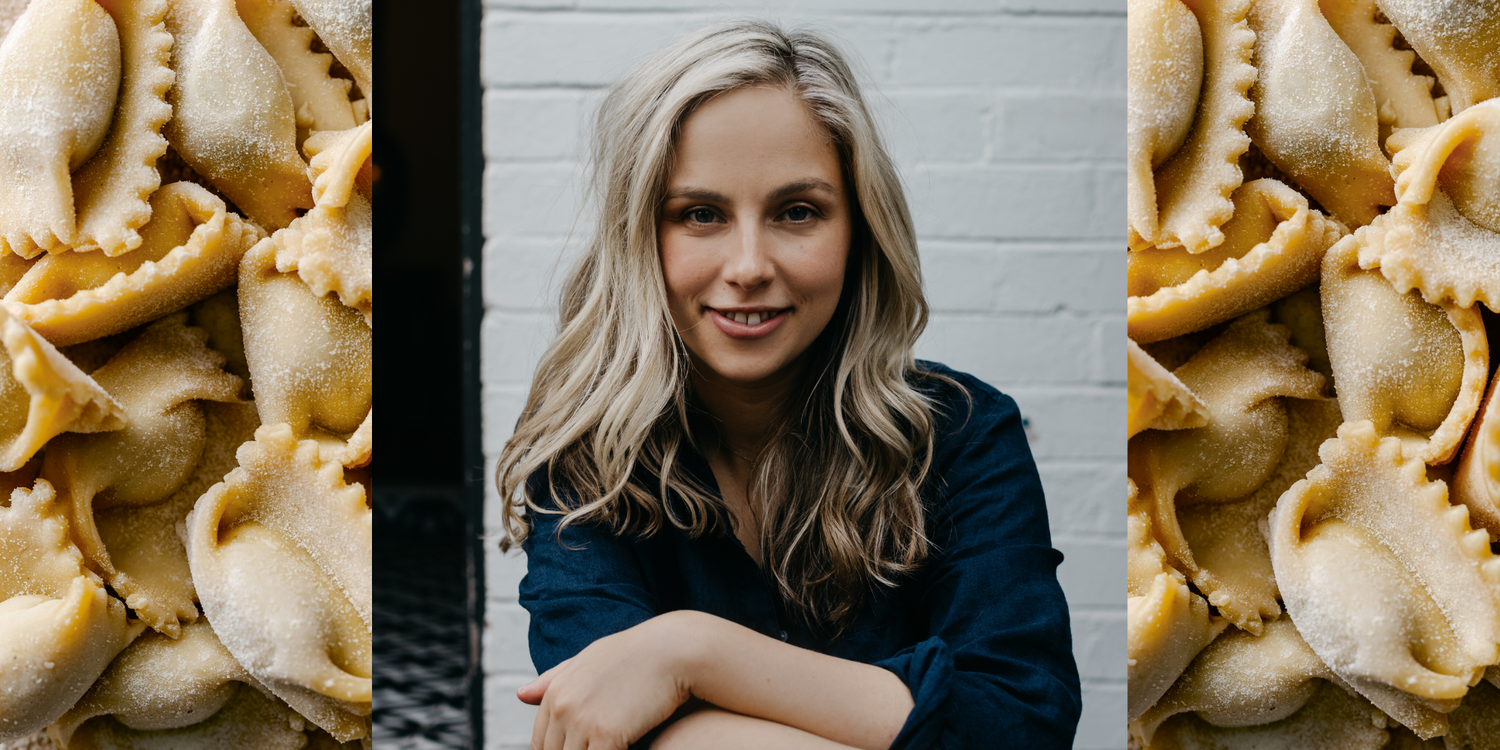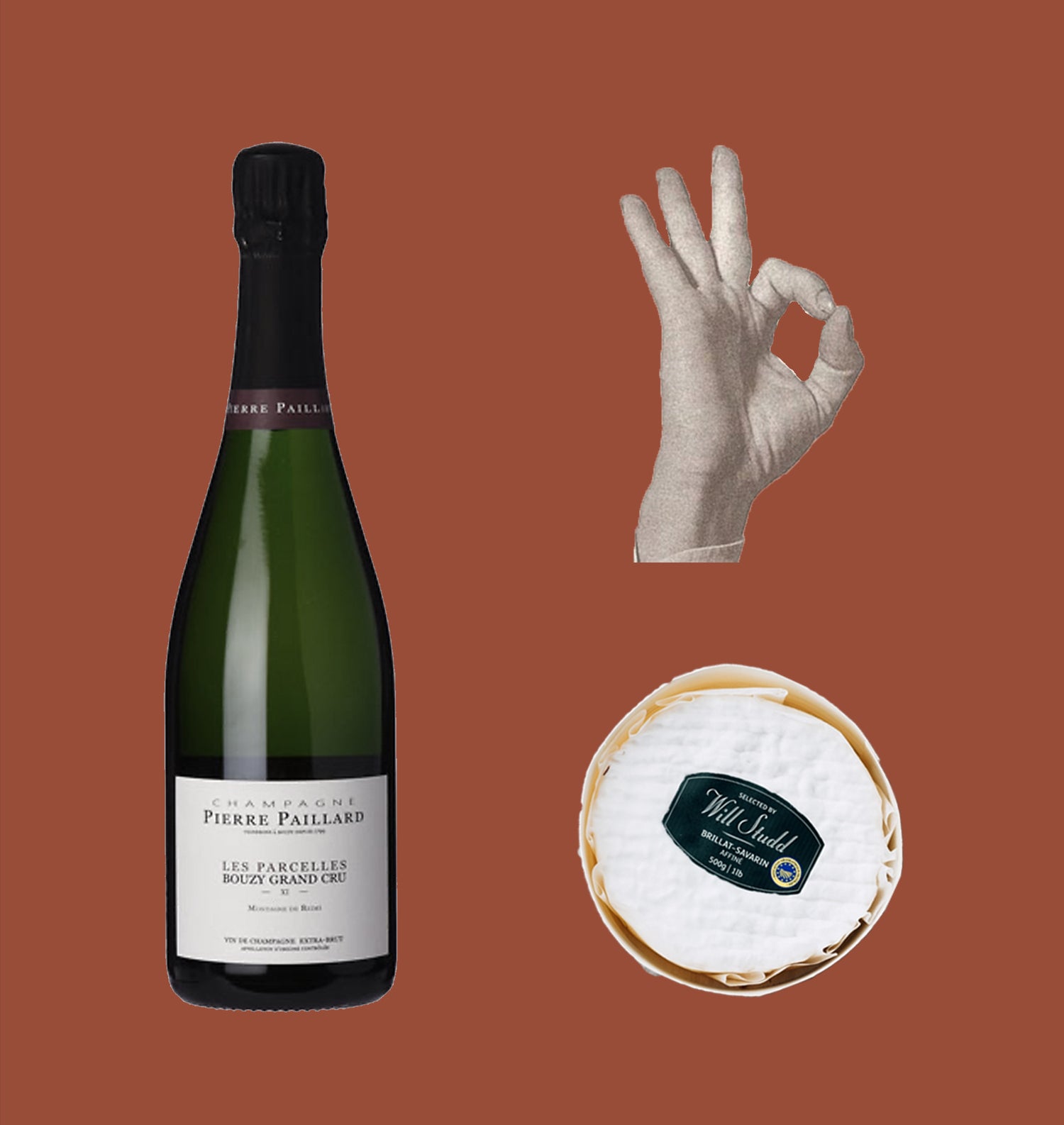
For some, the kitchen can be a chaotic and overwhelming place, but this is where Elizabeth Hewson finds her solace.
Years of mounting anxiety came to a head after a particularly tumultuous time at work and Elizabeth was headed for burnout. She turned to the usual salves like yoga, meditation, and exercise to abate her nerves, but in the end, it was pasta that transformed her.
This is how Saturday Night Pasta (SNP) was born. Both a ritual and the name of her cookbook, SNP is Lizzie’s form of meditation that helps to reset her week and reframe the craziness of life.
The practice of SNP shows us how making something from scratch and with our hands is soul-restoring. It involves carving out time for slow and purposeful preparation of food with no pressure, only pleasure. It’s a method of meditation and mindfulness that nourishes the mind, as well as rumbling tummies.
Lizzie channels her anxieties into kneading pasta dough, letting them melt away with her playlist of 1950s crooners like Ella Fitzgerald, Louis Armstrong, Frank Sinatra. (You can find Lizzie’s SNP playlist here.)
Given the pressure we all face in our lives, Lizzie emphasises her rejection of perfection in the Saturday Night Pasta ritual because the worst thing that can happen is that you end up having toast for dinner.
Lizzie was kind enough to chat to us about the joys of cooking for one with a solo SNP session, pasta workouts, and rejecting perfection. She also shared her recipe for Anchovy, Garlic, Caper and Green Olive Pici.

What’s new in your world, Lizzie?
2022 has been a big year with lots of balls in the air. I’ve been working away on a special (edible) product launch for Saturday Night Pasta which I’m hoping to launch in the coming months. We’re renovating our little house in Sydney’s Inner West which has been LOTS of fun with all this rain…and it’s been a big year at Fink with the launch of FIX. and Gildas. Our darling Forest (our Bernese Mountain Dog – who I like to refer to as my first born) had a setback so we’re learning to live with a 50kg disabled dog whilst chasing a busy toddler around.
So, there’s been lots of cooking and pasta making to keep my nerves in check.
Saturday Night Pasta has become a bit of a pasta bible for us—it’s comforting and calming which comes from your storytelling and the beautiful photography, but mostly this sense that you don’t prescribe to perfection. Why is that so?
Thank you so much. That means the world to me. That’s right, I wanted to push that notion aside of chasing perfection (and expectations) and focus on doing something purely because you enjoy it. Who cares if the end result is a mix bag of chubby little pasta shapes? They’ll still be delicious because you made it with your own two hands. When you remove that pressure, I find you enjoy things much more. It’s that age old saying, it’s not about the destination but the journey.

Can you tell us about solo SNP – what are the highs and lows of cooking for one?
To carry on from the previous question, the highs are that there is no pressure. I always say to really understand the power of Saturday Night Pasta, I recommend trying this first by yourself – or at least with someone who loves you just the way you are. For me, learning to make pasta alone felt safe. It became a place to learn, to make mistakes and know that the decisions I made were only going to affect dinner and nothing past that. The absolute worst thing that can happen is that you have a piece of toast for dinner. Naturally, I always find that fewer things go wrong when cooking for myself because there just isn’t as much riding on it. As a consequence, I built my confidence and learned to trust my instincts.
I don’t subscribe to the idea that you can’t cook a dish just because it’s only for yourself. That’s the whole point of Saturday Night Pasta! Making the effort to cook something for yourself can only be a good thing, as it means you value yourself enough to put the energy and care into a meal simply because YOU feel like it. Cooking and eating alone can be one of the most empowering and pleasurable experiences we can have. So, if you feel like a lasagne then, goddamn, you should have that lasagne. Besides, not only does it make for the best leftovers, it freezes well, too.
The low point – hmm, perhaps that you have to clean it up yourself?

SNP is more than a cookbook, it’s a method of self-care. Can you share your tips for setting the scene for a solo SNP?
This is your time to be in the moment. A little moment you’ve carved out in your busy life to lose yourself in the task of making pasta. There should be no distractions. If you’re like me and can easily be distracted by even a simple flicker of a light, then there are a few things I suggest you do to help set the scene and draw you into a little pasta-making bubble. Comfortable clothes is a must. A great playlist. A glass of wine (or your drink of choice!). Spend some time deciding what you want to cook (and feel like eating) and get everything out. Turn your phone on aeroplane mode so you don’t get distracted. And always pop a pot of water on the boil so you’re ready to throw your pasta in (what do they say, a watched pot never boils!).
You mentioned that mood often influences what you cook. Can you give us your go-to’s for when you’re feeling – (a) low, (b) energetic, (C) romantic, (d) tense?
Low – something comforting like a ragu that requires very little of me. The stove/or oven does all the work. It blips and blops away and fills the house with a comforting smell.
Energetic – I usually like something bright, zesty and fast to mirror my mood. Maybe a lovely bit of fish on the BBQ with a punch green sauce
Romantic – I always make one of my husband’s favourite meals when I want to be romantic and we cook it together. So, it could be that we go out to our favourite butcher and pick a special steak – he then cooks it on the grill and I’ll do some sides, potatoes and salad usually and always a bottle of red. Dessert will be something chocolatey and rich. That’s not my jam for dessert but it’s his favourite way to end a meal.
Tense – Pasta! I can’t emphasise enough the feeling of channelling a shitty week, a bad break-up, a broken heart or a frustrating conversation into the kneading of dough.
Have your cooking rituals changed with a baby in tow?
No and yes. I still carve out time to cook. It makes me feel good. It’s my self-care so in that sense, no. BUT sometimes it just means that I need to be smart with my time. Break up the steps, cook when he’s asleep or be organised. I also have no issues about taking shortcuts when cooking. Can of beans, part of the dish is pre-made and I jazz it up.
You talk about the immense impact that making pasta had on your mental health…but can you share with us the surprising physical impact that evolved out of hours of kneading?
I joke with my husband I got stronger. Of course, that’s yet to be proven but I like to tell myself that lots of kneading over time strengthened my abs.

We never realised how important form and position is when it comes to kneading dough. How can we avoid cramped shoulders and sore wrists?
Even weight on both feet. Roll your shoulders back. Use your core to knead. Take a deep breath. Take a sip of wine.
Lizzie’s Pasta Workout (from Saturday Night Pasta, p.33)
-
Plant your feet hip-width apart, making sure you are putting even with on both feet. Keep your knees slightly bent, you don’t want to lock them
-
Take a deep breath, roll your shoulders back and drop down your back. You don’t want to be kneading with your shoulders up by your ears.
-
Tilt forward from your hips, not your back and start kneading the dough. Pull in your belly button and start to knead. The power should be coming from your core, not your arms. Release your core as you exhale and tighten as you inhale.
-
You might find it more comfortable to put one leg forward for more strength. If this is the case, position your leading leg forward and push the weight through it as you knead forward, then push the weight back on the other leg as you bring the dough back, in keeping with your breathing.
-
After one knead, make sure to roll your shoulders back again to reset. Take a sip of wine for hydration and continue
How do you go about pairing pasta shapes with certain sauces?
Choosing the right pasta shape to match your sauce is a contentious issue. As many Italians will tell you, this makes the difference between an ordinary pasta dish and an extraordinary pasta dish. And while I do agree with this, I don’t think it’s as simple as one shape fits one sauce.
Throughout Italy, from region to region and town to town, a pasta shape, although maybe with another name, will be paired with a different sauce. Having said that, there are some general guidelines to follow that will enhance your eating experience. These are based on how heavy the pasta is compared to the sauce and making sure that they are balanced. The principles state that thinner, more delicate pasta shapes and filled pastas (as you’ve already got flavour going on in the filling) are best suited to lighter and simpler sauces, such as oil- or butter-based sauces, broths or a light tomato sauce. Bigger, thicker pasta shapes with more texture can stand up to chunkier, richer sauces, such as a ragù.
A thin spaghetti is a match made in heaven for vongole speckled with garlic and chilli, whereas orecchiette perfectly cups tiny florets of broccoli. Thick, long pastas, such as bucatini or pici, work well with richer sauces that have a kick, while curly strands, such as fusilli or busiate, catch chunky-style sauces in their curves and crevices. Then there are some shapes and sauces that are so deeply rooted in tradition that they are respected all over Italy. Tagliatelle al ragù is one of these, and you’d be hard pressed to find Emilia-Romagna’s famed meat sauce served with anything other than tagliatelle.
Chefs tend to be much stricter and more uncompromising on the topic, but luckily for you and me (assuming you are also a home cook) we aren’t bound by such sentiments. You could write a doorstop tome on pasta shapes and sauces – and indeed people have – but here is where I’m going to leave this subject. Similar to wine pairing, there is a point when it comes down to personal preference.
Hungry for more? Make Elizabeth's Anchovy, Garlic, Capers & Green Olive Pici here.





